Musings on Clarence Muse
 The first time I saw Clarence Muse in a movie was in 1972, in the all-black western, Buck and the Preacher, starring Sidney Poitier and Harry Belafonte. He portrayed a respected, elder member of a wagon train bound for a new territory, who was able to foretell the future by reading a bag of bleached bones.
The first time I saw Clarence Muse in a movie was in 1972, in the all-black western, Buck and the Preacher, starring Sidney Poitier and Harry Belafonte. He portrayed a respected, elder member of a wagon train bound for a new territory, who was able to foretell the future by reading a bag of bleached bones.
I next saw Muse several years later in Car Wash (1979), a comedy about the lives and loves of a ragtag bunch of employees at an inner-city car wash. Muse’s character had a shoeshine stall at the car wash and in his only scene, he was given the honor of shining the shoes of “Daddy Rich,” a wealthy preacher played by Richard Pryor.
The next time I noticed Muse was a few years ago, when I saw the pre-Code film Safe in Hell (1931), which starred Dorothy Mackaill as a prostitute who flees to a remote island after she accidentally kills (or does she?) a former client. Muse played Newcastle who, along with Leonie (Nina Mae McKinney), operated the hotel where Mackaill found refuge. He spoke with an English accent and was far more refined than the assembly of miscreants who were guests of the hotel.
Then I saw him in another pre-Code, Night World (1932), in which he portrayed a nightclub doorman. His character, Tim Washington, enjoyed an amiable relationship with a local beat cop (who was white), with whom he shared several meaningful discussions throughout the film.
At the time I saw the pre-Code features, I took note of the actor because there was something about the way he carried himself, a kind of regal bearing that set him apart from the other characters.
It wasn’t until earlier this year that I realized that the aged, eye-catching gent from the 1970 films, and the dignified, memorable performer from Safe in Hell and Night World were all the same man.

With Robert Donat in The Count of Monte Cristo (1934)
I began to realize that I’d seen Clarence Muse in small roles in a variety of classics – Huckleberry Finn (1931), The Count of Monte Cristo (1934), Show Boat (1936), Shadow of a Doubt (1943), Double Indemnity (1944), Scarlet Street (1945). And the more I contemplated Muse’s performances, the more I wanted to know about the man behind them.
Clarence Edouard Muse was born in Baltimore, Maryland, on October 7 (or 14th), 1889 (or 1895). His grandfather was a native of Martinique and his father, Alexander, was a deacon in the Perkins Square Baptist Church, sang bass in the church choir, and owned a chain of shoeshine stands. His mother, Mary Sales, was a seamstress and, Muse maintained, “the best soprano in Perkins Square in Baltimore.”
After his graduation from Baltimore’s Douglass High School (“My mother was quite a stickler for education,” Muse said), the actor-to-be attended the Dickinson School of Law in Carlisle, Pennsylvania, using an inherited singing talent to help finance his education.
“I sang my way through school and had to keep singing in order to raise enough money to practice law,” Muse recalled. “I’ve never stopped singing.”
 The details of Muse’s personal and professional life around this time are murky – not from lack of information, necessarily, but more because of conflicting information. One source states that Muse got married in 1907 – four years before his graduation from Dickinson – to one Frieda Belle Moore, and that the two had a son in 1910. Most references, however, make no mention of Frieda; instead, they maintain that Muse’s first wife was Willabelle Marshbanks (also referred to as Willabelle Burch West), a fellow performer who was billed as Ophelia Muse, and that Muse and Ophelia had two children together, Dion and Mae. (Maybe Frieda Belle and Willabelle are the same person!) Also, it’s hard to pin down when and why this marriage ended, but I can say with certainty that in 1953, Muse married Irene Ena Kellman, a Jamaica native who was 33 years his junior, and the two remained together until the actor’s death in 1979.
The details of Muse’s personal and professional life around this time are murky – not from lack of information, necessarily, but more because of conflicting information. One source states that Muse got married in 1907 – four years before his graduation from Dickinson – to one Frieda Belle Moore, and that the two had a son in 1910. Most references, however, make no mention of Frieda; instead, they maintain that Muse’s first wife was Willabelle Marshbanks (also referred to as Willabelle Burch West), a fellow performer who was billed as Ophelia Muse, and that Muse and Ophelia had two children together, Dion and Mae. (Maybe Frieda Belle and Willabelle are the same person!) Also, it’s hard to pin down when and why this marriage ended, but I can say with certainty that in 1953, Muse married Irene Ena Kellman, a Jamaica native who was 33 years his junior, and the two remained together until the actor’s death in 1979.
Meanwhile, after his graduation from Dickinson, Muse got a job at the Breakers Hotel in Palm Beach, Florida, performing as part of a quartet in order to earn enough money to open a law office. But Muse later abandoned his plans for a law career: “There wasn’t much call for black lawyers in those days,” he recalled years later. “I saw lawyers chasing ambulances and they all had patches in their pants.”
At the end of the season in Palm Beach, Muse reportedly won several thousand dollars in a poker game and embarked on a train back to New York, but he never reached his destination. Instead, he got off in Jacksonville, bought a new suit of clothes, and found a hotel room. A short time later, Muse met an “important personality around the town” named Broadway Jones.
“He introduced me around, and I had a few sheets of . . . professional music. So I gave him that. We became great buddies,” Muse recalled years later.

Muse’s first Hollywood film was Hearts in Dixie.
Muse got jobs singing in local venues including the Airdome Theater and the Globe Theater, and later helped organize the Freeman-Harper-Muse Stock company, touring the South with the company. Several years later, Muse finally made it to New York, where he joined the Lafayette Players (many sources claim that he was the founder and originator of the group, but he was not. He was, however, one of the first members). Muse performed for seven years with the Lafayette Players; his final production was Dr. Jekyll and Mr. Hyde, where he played the dual title roles in whiteface makeup, becoming the first black actor to do so. (Muse said that the play was relevant to black actors and audiences because “in a way, it was every black man’s story. Black men too have been split creatures inhabiting one body.”) During his years with the Lafayette Players, Muse became one of the founding directors of the Delsarte Film Corporation, a black independent film company, for which he wrote, produced and starred in several films. Muse then moved on to the Royal Gardens Theater in Chicago, and to Columbus, Ohio, where he began producing his own stage plays at the Ogdeon Theater.
Around this time, Muse made his move to the silver screen – although here, as with many other aspects of Muse’s story, sources disagree on the exact course. Some say he was performing in Chicago when he got a call from Fox Studios. Others say he was in Columbus and he received a telegram. And one – which happens to be my favorite – contends that he was already in Hollywood, struggling to find work, when he was hit by a car driven by Fox producer Winfield Sheehan. By the time it was determined that Muse was unhurt, he’d agreed to a screen test – and he made his film debut in 1929’s Hearts in Dixie. In the film – the first to have an all-black cast – Muse played a noble, 90-year-old tenant farmer. Of his performance, author and documentarian Miles Krueger later wrote, “Clarence Muse brings to the principal role an aura of wise, quiet strength, and dignity that often carries the story through passages which might otherwise seem condescending.”
Shortly after he finished filming for Hearts in Dixie, Muse decided to remain in California. “I began to say to myself, ‘What am I leaving this country for? This looks like a new world in Hollywood,’” he recalled. “I didn’t know where the next job was coming from, but making money like this was something unusual.”

Muse’s song, “When It’s Sleepytime Down South,” was heard in Safe in Hell and Hell’s Highway.
Muse wasted little time finding more picture work, and worked nearly non-stop over the next two years. One of his films during this time was Rain or Shine (1930), directed by Frank Capra, who “became my buddy all through my career,” Muse said. Another was Safe in Hell (1931), starring Dorothy Mackaill and featuring Muse as Newcastle, the porter in a hotel located on a Caribbean island. The film was directed by William Wellman; in 2013, his son, William Wellman, Jr. spoke of Muse at the Turner Classic Movies film festival: “When you hear him speak,” Wellman said, “you know that he is part of the intelligentsia.” The film also featured Nina Mae McKinney – known as “The Black Garbo” – who, in one scene, sang a song titled “When It’s Sleepytime Down South.” The song was co-written by Muse, and would later be used by Louis Armstrong as his theme song. Also in 1931, Muse returned to the stage, starring in a Los Angeles production of Porgy; his portrayal of the title role was selected by the Los Angeles Critics as one of the best 10 stage performances of the season. A fitting observation of Muse’s work around this time appeared in an article in the Baltimore Afro-American, which stated: “Somber or tragic, or gay or frivolous, whichever his next role may be . . . Muse will play it to the hilt, adding lustre to his name and that of the race.”
Muse had numerous fan clubs and was receiving fan letters by the thousands by 1932, which turned out to be a banner year for the actor – and it was the busiest of his career; he was seen in close to 20 feature films, including The Cabin in the Cotton, in which Bette Davis famously declares, “I’d like to kiss ya, but I just washed my hair.” That same year, Muse was sent by Warner Bros.’ First National Studios on a personal appearance tour of America. He later said that one of the high points of the trip was visiting a mixed-races kindergarten class and teaching “a bunch of yelling kids to sing When It’s Sleepytime Down South.” Also on the trip, Muse got the opportunity to meet President Franklin Roosevelt shortly after his first inauguration; the actor stated that he found Roosevelt to be “an honest, sincere, straightforward person.”

Taking a stogie break with a few pals.
Muse’s series of fortuitous experiences appeared to hit a snag in August, when the Committee for the Olympics – which were held in Los Angeles that year – barred the actor from a program supplied by a local radio station because of his race. But even this negative turn of events ended up with a notch in the positive column. After word of the Committee’s action got out, a number of white Hollywood stars refused to participate in the program. Days later, the Olympic Committee apologized to Muse and invited him to appear at an entertainment that was put on for the athletes. The committee even gave Muse a personal escort to and from the Olympic village.
Muse’s prolific screen career made him one of Hollywood’s highest-paid black performers; he not only maintained a home in Los Angeles, but in 1934, the actor purchased 300 acres of land near Perris, California, and built a 160-acre ranch, which he named “Muse-a-While.” Despite his wealth, however, Muse never forgot those who were in need. During Christmas each year, he raised money to provide food baskets to the less fortunate people of his race, and in the early 1930s, the Baltimore Afro-American reported that Muse partnered with seven charity organizations to present a charity benefit at the Lincoln Theatre in Los Angeles. Numerous performers who’d appeared in films with Muse participated in the show, including Pat O’Brien, Dorothy Mackaill, Una Merkel, Ralph Bellamy, Marie Dressler, George Raft, Wallace Ford, Ruth Chatterton, Ann Harding, and Warren William.

Muse prays over his dying son in Broken Earth (1936).
Throughout the remainder of the decade, Muse continued his film appearances as well as performances on the radio and the stage, including a starring part in an 11-minute experimental film called Broken Earth in 1936, and the title role in Emperor Jones that same year at Los Angeles’ Wilshire-Ebell Theatre. He also produced Run, Little Chillun for the Federal Theatre Project (and directed its Broadway revival in 1943); wrote the music and sang in Harlem Heab’n, a symphony performed at the Hollywood Bowl; and teamed up with famed author Langston Hughes to write the screenplay for Way Down South (1938), the first Hollywood feature film penned by black screenwriters. He also wrote, starred in, and partially financed Broken Strings (1942), an all-black drama about a classic violinist whose career is threatened by a car accident. The Pittsburgh Courier, the nation’s most popular black newspaper at the time, declared the film an unqualified hit and applauded Muse’s performance. “Here is a Negro movie that tops anything and everything that has been done,” the paper’s reviewer stated. “Clarence Muse can well be proud of his role in this picture.” Off-screen, Muse was a vocal and fearless champion for his race; in 1937, in a feature that appeared on Christmas Day in the Baltimore Afro-American, Muse said that his Christmas wish was “that our people will continue to think for themselves, without prejudice and without bias; that the anti-lynching bill will not only become a law, but that it will be unnecessary by next Christmas.”
Notwithstanding Muse’s favorable reputation away from the cameras, on-screen he’d portrayed so many stereotypical roles that he was referred to in some circles as “Hollywood’s perennial Uncle Tom.” The label didn’t sit well with the actor – he reportedly once sued a newspaper that described him that way, and he maintained that there were two audiences: a white audience that wanted to see blacks as buffoons or in song, and a black audience “with the desire to see the real elements” of black life portrayed. Muse also published a 26-page booklet in which he addressed the history of black actors and bemoaned the fact that “America just won’t let Uncle Tom die.”

Muse’s motto: “In my entire life, I have never met a man or a woman with enough intelligence to insult me.”
Still, in the early 1940s, when the National Association for the Advancement of Colored People (NAACP) took a stand against the depiction of blacks in film, Muse was one of Tinseltown’s biggest supporters. After meeting with celebrities and other “movers and shakers” in Hollywood, NAACP Executive Director Walter White announced that black audiences “resent the fact that their billed stars are almost without exception placed in the roles of servants when appearing in pictures.” White also worked with studio execs to establish an ad hoc committee to monitor the image and portrayal of blacks on screen. Muse, however, was concerned that the NAACP’s position would lead to a decrease in screen roles for blacks, and he was one of numerous black performers who criticized White for failing to consult with them first.
“Actors are not gangsters, playing parts to destroy colored dignity,” Muse told reporters. “They are earning bread like lawyers, doctors and workers, and deserve the same consideration. If Mr. White will change his procedure and become democratic instead of a dictator, he may earn a bigger salary and do a great service for the colored people in the realm of motion pictures.” Several years later, Muse would also be an advocate for the controversial TV series Amos ‘N’ Andy. He would emphasize that, despite the broad caricatures of the title characters, the series allowed black performers to portray doctors, bankers, judges, professors, and other parts generally denied them in “white” shows.
During the next two decades, Muse was seen in such feature films as Heaven Can Wait (1943), The Thin Man Goes Home (1945), Night and Day (1946), and The Las Vegas Story (1952). He also began making appearances on TV that included the series Casablanca, where he played Sam, the piano player in Rick’s Café Americain (the role portrayed by Dooley Wilson in the 1942 film). And during the World War II years, Muse made hospital tours to entertain wounded soldiers and served as a member of the Hollywood Victory Committee, which arranged the appearances of stars overseas.

Muse went into semi-retirement after this film.
In 1959, Muse played “Honey-Man” in Otto Preminger’s Porgy and Bess, a film that he called “one of the last great masterpieces I got hung in.”
“That was great as a picture,” Muse recalled. “It was certainly great as a job. It was like some of the stuff we used to do with Frank Capra.” But after this feature, Muse went into semi-retirement, taking on only a handful of roles during the 1960s and 1970s. These included several episodes of The Swamp Fox on Walt Disney’s Wonderful World of Color in 1960 and Buck and the Preacher in 1972. After his appearance in the latter film, Muse demonstrated his continued encouragement and support for blacks in entertainment when he praised the picture’s producers and stars, Sidney Poitier and Harry Belafonte.
“Not only are they securing the black actor’s position in the industry,” Muse said, “but when you’ve got your own money in the enterprise, your voice gets bigger.”
Muse also appeared in A Dream for Christmas (1973), a made-for-TV movie with an all-black cast that was originally designed as the pilot for a never-sold TV series called The Douglas Family. Written by Earl Hamner, Jr., the film starred Beah Richards, Hari Rhodes, and Juanita Moore. (The same year of the film’s release, Muse was inducted into the Black Filmmakers Hall of Fame.) A few years later, Muse was seen in Car Wash (1976), a box-office smash whose score won a Grammy and the Best Music award at the Cannes Film Festival. Away from his acting appearances, Muse and his wife were active members of their community in the southern California town of Perris. The two regularly attended city council meetings, where Muse was apparently a vocal presence on community arts and senior citizen issues. According to a local newsletter, Muse didn’t take any “guff from anyone in seeing that his concerns were addressed. He may have seemed like a handful to some, but everything he did was with good will and to benefit the Perris Valley.“

Muse was inducted into the Black Filmmakers Hall of Fame in 1973.
Muse also frequently entertained young performers and writers who made pilgrimages to the Muse-a-While ranch, and when he was in his 70s, the actor created the Perris Arts Festival, which gave local children an opportunity to draw and paint, make pottery, sing, dance, and read poetry. Muse also held community picnics on his ranch, spearheaded a beautification effort by planting pine trees throughout the town, and came up with an event where Santa Claus would visit the town for two weeks each winter, listen to the children’s wish lists, and distribute gifts.
“He seemed to be everywhere in the community,” one Perris resident told the Press-Enterprise newspaper, recalling when she met Muse as a high school student. “He made you realize that you can accomplish goals and that the impossible is not impossible.”
In September 1979, the 89-year-old actor suffered a stroke at his ranch and was admitted to the Community Hospital of Perris Valley. He died there less than a month later, on October 13th, of a cerebral hemorrhage. His last film, The Black Stallion, starring Mickey Rooney and Teri Garr and produced by Francis Ford Coppola, was released a few days after his death.

Muse with his graduating class from Dickinson School of Law. He received an honorary Doctor of Laws degree from the school in 1978.
Recognition for Clarence Muse has continued over the last several decades; in the early 1980s, a festival and film retrospective – “Clarence Muse: Star of the Silver Screen” – was presented at the Central Pratt library in the actor’s hometown of Baltimore, and in February 2010, in honor of Black History Month, the Perris Valley Museum and Historical Association sponsored a special exhibit about the life and accomplishments of the actor and his contributions to life in the local community. Today, a theatre in Dallas, Texas, bears his name; the Clarence Muse Café Theatre is part of The Black Academy of Arts and Letters, founded in 1977 (the academy’s website states that Muse was the first person to make a substantial contribution to the organization). And currently, an effort is underway to secure a star for Muse on the Hollywood Walk of Fame.

“One of the outstanding character actors in Hollywood.”
Known as the “Dean of Black Actors,” Clarence Muse was a true film pioneer, an actor that British film critic Peter Noble described as “one of the outstanding character actors in Hollywood — a man who ranks with the Lionel Barrymores, Frank Morgans and Hume Cronyns.” Muse arguably appeared in more films than any other black performer in the history of cinema. He was the first black man to appear in a talking motion picture. The first black man to earn a screenwriting credit on a Hollywood film. The first black director of a Broadway show. He was a tireless advocate for black entertainers, and a champion for children of all races. And although the roles he played throughout his screen career consisted primarily of porters, butlers, stablehands, and cooks, Muse, according to historian and author Donald Bogle, tried to “invest his servant roles . . . with a semblance of dignity and a seriousness of purpose.
“The fact that he played torn characters cannot be denied. The fact that he played those figures with great intelligence and thoughtfulness has often been overlooked.”


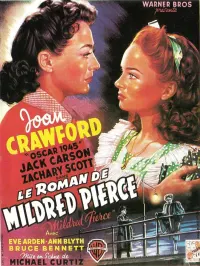




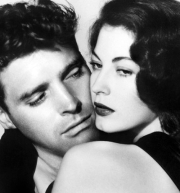













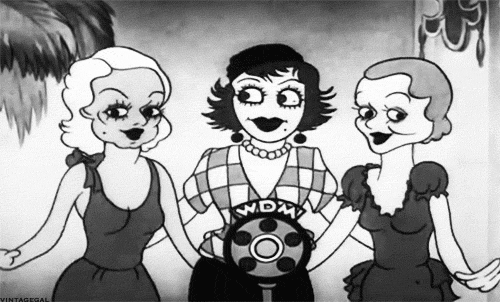


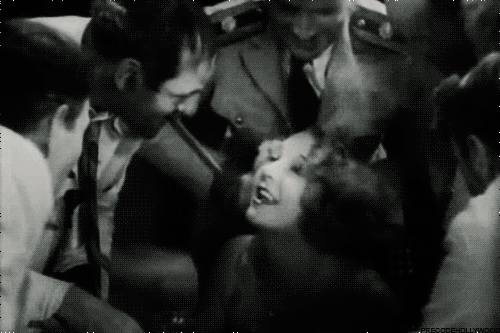


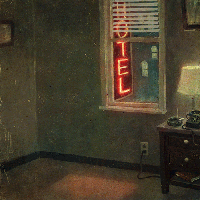
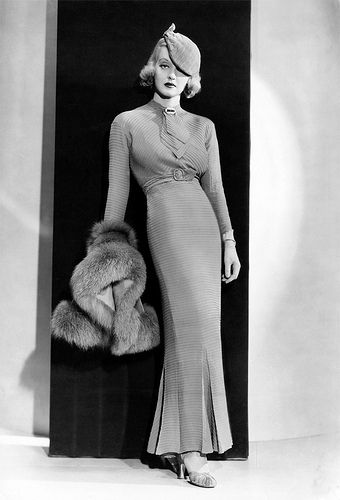



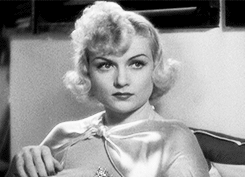
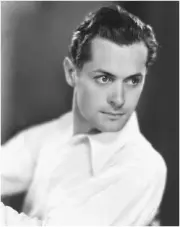
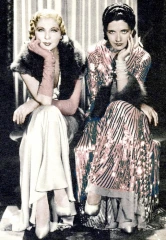

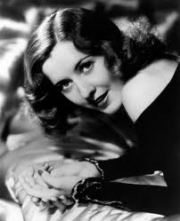



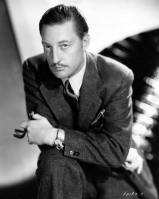




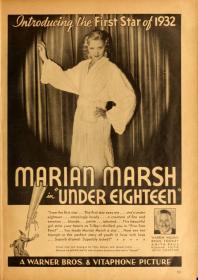
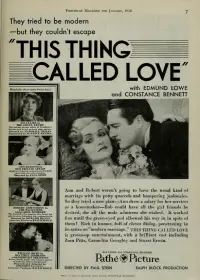

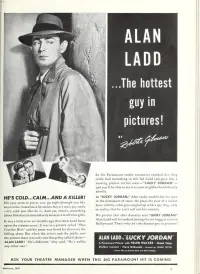
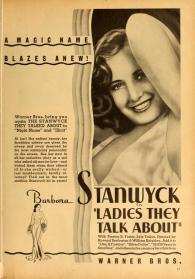

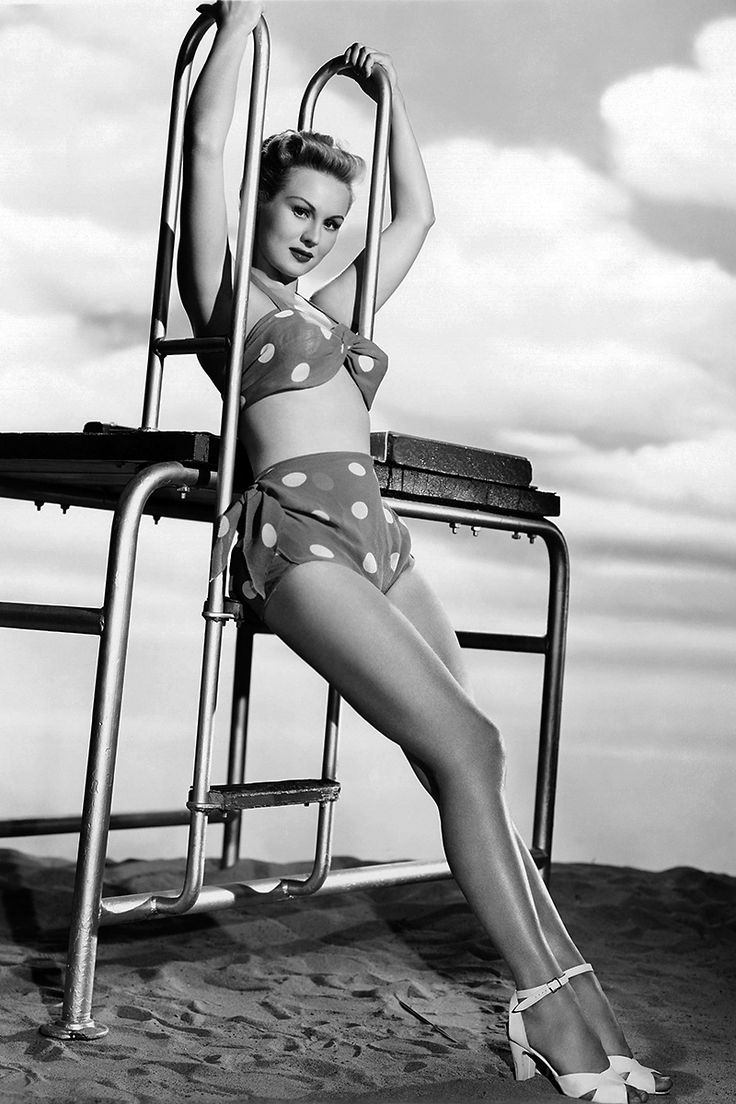



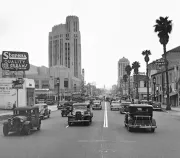
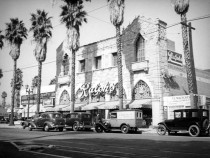


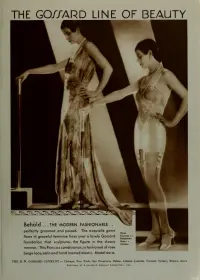

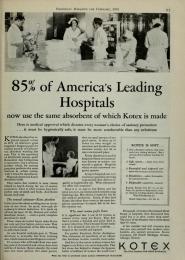

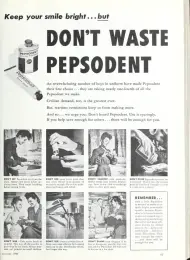


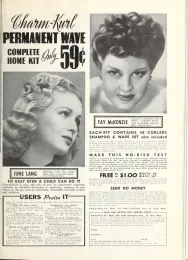


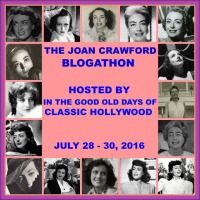


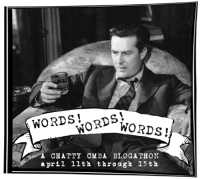

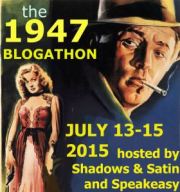
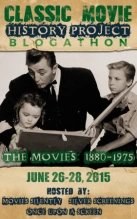
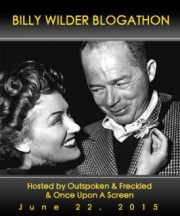


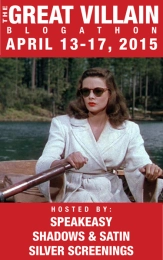


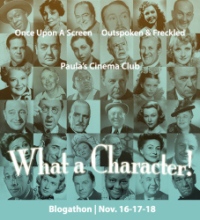
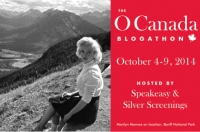


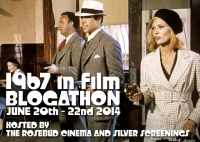


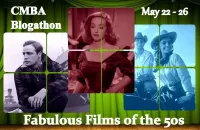
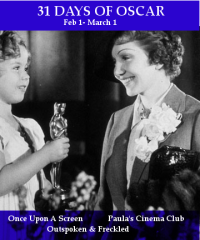
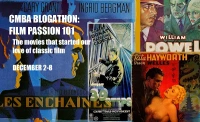







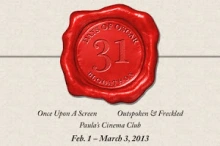

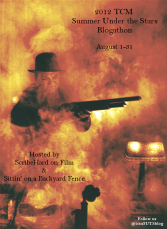


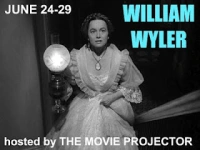





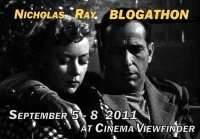

Great post. Thanks for sharing this story of his public life and his awesome motto.
Thanks so much! I love his motto, too. I couldn’t figure out a way to include it in the article, but I had to include it somehow!
Not only was he a talented man, but a compassionate one too. I love that he spent considerable time and money and effort to help others. That’s A+ in my books!
He certainly seemed to be an unique and fascinating individual. I would love to have met him. How lucky the people of Perris were to have him in their midst.
Clarence Muse was an early face in my late father’s efforts to teach us about the great character actors of classic movies. The more we saw of him, the more we wanted to learn about him and, of course, the more we were impressed.
It was Frank Capra’s remake of “Broadway Bill”, “Riding High” (like much of the cast, Muse was in both films) that made the biggest impression on me as a kid. It still has the feel of a happy movie, with the cast having a good time and sharing it with the audience.
I never pass up the chance to see “Way Down South” when TCM screens it. It’s an odd and oddly subversive film, aimed at the kiddie audience with lessons to teach. Plus, Mr. Muse in drag has to be seen the second time because you can’t believe it the first time.
I hope to get the chance to see Way Down South one of these days, CW — I have heard and read so much about it! Thanks so much for your insightful comments. 🙂
[…] Clarence Muse called him a committee of one and claimed that White wanted only a few […]
Mr White Goes To Hollywood: Walter White And The Battle For Black America - said this on May 9, 2016 at 9:51 am |
[…] Clarence Muse called him a committee of one and claimed that White wanted only a few Black skinned Negroes on the screen with the emphasis shifted to more light skinned and mulattos. He also argued that roles for Black actors and actresses were better than before. […]
Mr White Goes To Hollywood: Walter White And The Battle For The Black Image | said this on July 8, 2016 at 2:14 pm |
I had the privilege of spending a day with Mr Muse and his wife in the early 60s when he lived near Perris, Ca.
He was retired at the time. I didn’t realize how much more he did later, thank you.
That is so awesome, Larry. What a priceless memory to have. I am pea-green with envy!
I was most impressed by the things he took pride in. I read several of his newspaper essays regarding human rights.
I don’t remember clearly, but I think I was with my dad’s friend C.K. Van Sickle. He was a handyman I learned a lot from.
Mr Muse and Juanita treated me like an honored guest.
I have many memories of that wonderful day.
I seem to remember him showing me an old photo of him playing Uncle Tom in a silent version of Uncle Tom’s Cabin, but I don’t see reference to it in his filmography.
Every time I see Clarence Muse in a movie now, I think of you meeting him. Such an honor. He seems like such a fascinating man.
Larry: I am interested in talking to anyone who was at Clarence”s ranch. can you contact me at 714 745 2539, Bob
Am I researching Clarence Muse and his Muse A While ranch. Can you provide me with the source of information on Frieda Belle Moore and the photo of Clarence at Dickerson College. The information I have on Clarence’s marriages is: Married Ophelia Labertier (an actress) sometime around 1909 and they had two Boys, Dion and Clarence Jr. Ophelia died in 1923 and in 1925 he married Willabelle Burch West or Willabelle Marchbanks. I think that Willabelle had a daughter May West at the time of their marriage and May was Clarence’s stepdaughter. When Clarence and Willabelle moved to California, May came with them, Dion did not join them until later. Dion also was an actor and later joined the military. Cannot find any info on Clarence Jr. and not info on his stepdaughter May. I am looking for any information on the Muse A While ranch from people who may have visited or have any photos.
Hi, Bob — here’s where I got the photo of Muse at the Dickinson School of Law: http://blackhistory.psu.edu/timeline/clarence_muse_first_colored_student_at_dickinson_school_of_law
Here’s where I found that he married Frieda Belle Moore:
https://pabook.libraries.psu.edu/literary-cultural-heritage-map-pa/bios/Muse__Clarence
I wish you all the best with your research!
ok, thanks for the info, I had found the reference to the first marriage and chased that reference to another reference, but neither quoted a source. Given the dates I am not sure he was married before he married Ophelia.
Thank you for this article. While I may have seen Clarence Muse in many movies during my childhood, I was interested in your article because I have been searching for information about his third wife Irene Ena Kellman who was my father’s sister. The photo was particularly interesting. I was wondering where you found it. Appreciate any feedback.
Regards,
Judith
Hi, Judith — Thank you so much for writing. I found the photo and write-up in the August 26, 1954 issue of Jet Magazine. I hope this helps!
Thank you so much for your reply. It is wonderful to fill in missing pieces in a family history.
I’m glad I was able to help in some small way, Judith.
Thank you for sharing your research on Clarence Muse! I have seen him many times in roles in which he made his characters memorable. I was curious as to what became of his children. I saw in the L.A.1940 census that Dion and Mae lived with he and his wife but I came up short for any further information. Thanks again for such a detailed piece.
Thank you so much, Teresa. I’d wanted to write about Clarence Muse for a long time — he was always so fascinating to me. It was a joy to tell his story in some small way.